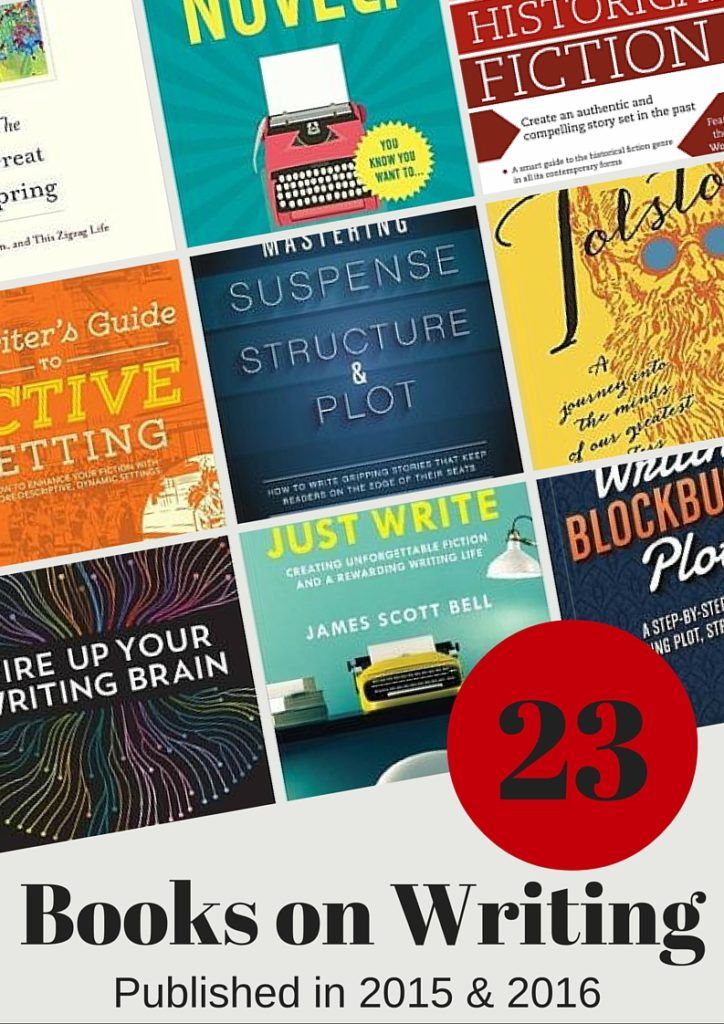 As creative writers, we tend to get stuck. Whether it’s racing against the clock, summoning our inner novelist, battling our worst critic, or even putting pen to paper, we realize that sometimes we could use a helping hand.
As creative writers, we tend to get stuck. Whether it’s racing against the clock, summoning our inner novelist, battling our worst critic, or even putting pen to paper, we realize that sometimes we could use a helping hand.
But with an endless trove of books on writing and books about writing, which one best suits your creative masterpiece?
It’s a tough call, yet I have discovered just what you need. I have compiled a list of 23 of the best books on writing references published in 2015 and 2016 that are affordable. These are guaranteed to transform your writing.
If you want to see the updated list, look at my list of the Best Books for Writers.
Each book about writing targets a specific topic, from plot to characters to the writing life, overflowing with useful resources that are essential for writers at any stage. Subjects primarily contain fiction, but I have also included poetry references and even handpicked a few guidebooks on romance, suspense, and historical fiction. While some of these authors delve into plot, setting, scene, and character, others take a dive into your writer’s soul on the hunt for gems of creativity.
1. Martha Alderson, Writing Blockbuster Plots: A Step-by-Step Guide to Mastering Plot, Structure, and Scene (2016) 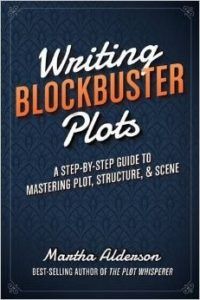
Sometimes as writers when we try to develop a one-of-a kind plot for our story, we cringe. Carrying the right tool box to can make our lives much simpler. Writing Blockbuster Plots is just the book on writing that a writer needs to avoid frustration. With step-by-step strategies that turn writing plots and creating scenes into a stress-free endeavor, author Martha Alderson forges through the complexities of any story with the help of her handy-dandy Plot Planner and Scene Tracker tools.
After using effective techniques, you’ll be able to:
- Plot an intriguing story from beginning to end.
- Ensure that each scene contributes meaningfully to the narrative by considering the essential elements.
- Link meaningful scenes into a smooth and flowing narrative, create boiling tension and conflict to engage your readers.
- Consider your weak areas in your story and know how to revise them.
In the end, you will learn how to write a story that deserves to be on the bestseller list.
2. James Scott Bell, Just Write: Creating Unforgettable Fiction and a Rewarding Writing Life (2016) 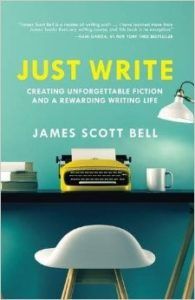
Become the writer you were meant to be with one, simple formula: Just Write.
Writers are given a fresh garden of opportunities to cultivate a successful writing life and find an audience for their work. However, many writers find themselves in quicksand. Bestselling Author James Scott Bell encourages writers to overcome the worst kind of obstacles a writer can face by deeply immersing yourself into the craft.
Delve inside the pages to find out how to:
- Brainstorm new concepts for your fiction.
- Create memorable characters that your readers will love.
- Study classic & contemporary novels to improve your writing.
- Market yourself as a writer.
- Manage your time effectively.
It takes a lot to become a fully-fledged writer, including a long commitment of effort and devotion to the writing process. Save the excuses and avoid procrastination. Dive into your career with a big leap of confidence and take off with a new set of fins. If anything, remember why you write in the first place.
3. Mary Buckham, A Writer’s Guide to Active Setting: How to Enhance Your Fiction with More Descriptive, Dynamic Settings (2016)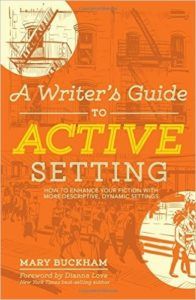
You may not know it, but setting is one of the most powerful elements of the writing craft. It is also the most misunderstood. Why is that?
When writers create setting, they tend to pull readers out of the narrative and bring their attention from the action on the page. A Writer’s Guide to Active Setting will show you how to create vivid details for your setting that will bring your story to life. You’ll learn how to deepen your writing through character development and create a backstory that won’t bore your readers.
Drawing upon examples from authors writing across a variety of genres, Mary Buckham illustrates exactly how the proper use of setting can make your story shine. Choose to make setting simple!
4. Paula Munier, Writing with Quiet Hands: How to Shape Your Writing to Resonate with Readers (2015)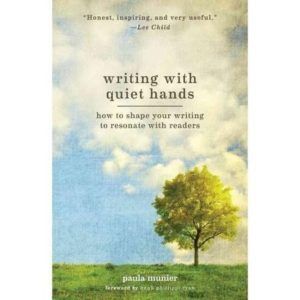
Are you a committed writer? If not, it’s time to find out how you can become one.
Writing with Quiet Hands takes you on a rewarding journey that will show you how to hunt for new inspiration and mold your imagination into a well-crafted story. Along the way, you will learn how to grow a network of personal support and navigate through the turbulent rapids of today’s writing market. This is really one of the best books on writing on the market.
Literary agent and author Paula Munier offers advice of how to breathe life into your words, summon your muse, avoid procrastination, and treat your life’s passion as a top priority. Throughout your voyage, you will develop a distinct voice, create your own style of writing, and hook your readers with engaging narratives. You will hone the writing craft by revising and polishing your work before you cross the border of an unpublished to a published writer. Furthermore, you will satisfy the desire to publish confidently.
5. Jane Cleland, Mastering Suspense, Structure, and Plot: How to Write Gripping Stories That Keep Readers on the Edge of Their Seats (2016)
Suspense is one of the most powerful tools a writer has for captivating readers. With fiction, suspense creates the emotional turmoil that keeps readers wanting more. Mastering Suspense, Structure, & Plot is your guide to mixing suspense with your narrative. Award-winning author Jane Cleland will show you how to:
- Implement thirteen no-fail techniques to construct an effective plot and structure for your story
- Add elements of suspense twists, reversals, and moments of danger
- Write subplots with purpose
- Improve your descriptions, character development, sentence structure, and more.
Packed with individual case studies, exercises, and dozens of examples from best-selling authors, Mastering Suspense, Structure, & Plot is the key to writing suspenseful, engaging stories that leave your readers begging for more.
6. Richard Cohen, How to Write Like Tolstoy: A Journey into the Minds of Our Greatest Writers (2016)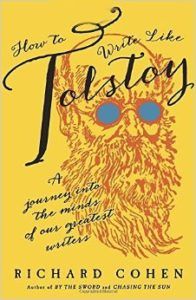
If you are a fan of Tolstoy (or not), this book takes you on a thought-provoking journey inside the minds of the world’s most accomplished storytellers, from Shakespeare to Stephen King.
Behind every acclaimed work of literature is a trove of heartfelt decisions. The best authors put sheer dedication into each element of their stories, from plot and character development to dialogue and point of view.
Editor and teacher Richard Cohen draws on his research of published works to discover the elements that made their prose memorable.
The result is a unique exploration of the act and art of writing that enriches our experience of reading both the classics and the best modern fiction. If you only read a single book about writing this year, make it this one.
7. Emma Darwin, Get Started in Writing Historical Fiction (2016)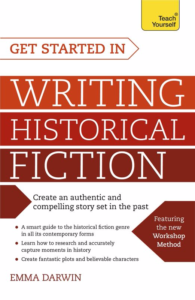
Do you have a compelling vision for a story set in the past?
Teach yourself how to write historical fiction, whatever your chosen era.
This book is an essential guide to mastering the art of writing historical fiction, from where to start with research to how to capture the voices of the past.
It carries the distinctive learning features of the Teach Yourself Creative Writing series, with snapshots designed to get you writing quickly, key ideas to help materialize thought, and a wealth of supplementary material, including a plotting grid, which will be indispensable for aspiring novelists.
8. Natalie Goldberg, The Great Spring: Writing, Zen, and This Zigzag Life (2016)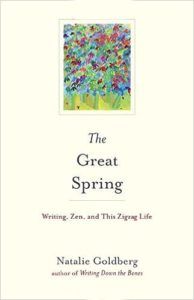
Do you have what it takes to have a writing life that feels like an eternity?
Author Natalie Goldberg does and encourages her readers to embrace the long, fulfilling years of being a writer. As a teacher, writer, and devoted student of Zen, Goldberg has learned how to cope with time and welcomed new ways of looking toward the future as a long-term writer.
Natalie Goldberg shares the moments of her own life of writing, teaching, and Zen practice—moments of epiphanies or floating through the world like driftwood until she found herself and her voice.
Throughout the pages, Goldberg teaches her readers the guidelines of her own writing life—and if stick close to ourselves, even during those time we wish to crawl into a corner, we will discover our own voice, for each one of us has a voice to heard.
So, do you have what it takes to have a long writing life and know who to live it? I think you do.
9. Natalie Goldberg, Writing Down the Bones (2016)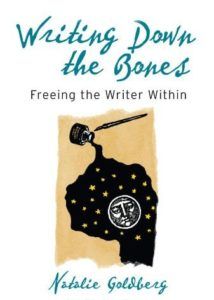
This is the 30th anniversary of her book on writing, Writing Down the Bones, which should tell you that it’s one of the best books on writing out there.
In this bestseller, Goldberg uses wit, logic, and intuition to inspire aspiring and established writers to take a big step. The finish line rewards the writer with the ability to write artfully as if it were second nature. Her advice offers tips and a pep-talk on many areas of the writing craft.
Some examples include: writing from “first thoughts,”, listening as you write, using verbs, and overcoming doubts. Who could ask for more? Goldberg connects the art of writing with the value of a writer’s life. With this vision, readers are provided the best advice that will inspire those who have longed to write and those who are already playing the field.
10. Susan Reynolds, Fire Up Your Writing Brain: How to Use Proven Neuroscience to Become a More Creative, Productive, and Successful Writer (2015)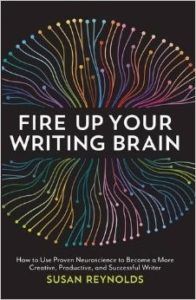
As creative writers we may not normally add the field of science to our fiction recipes. However, Fire Up Your Writing Brain combines neuroscience and the art of writing to create an excellent resource for writers to reach their full potential.
Author Susan Reynolds offers straight forward instruction, useful techniques, and compelling exercises that will transform the brain into the ultimate writing tool. This book allows the emerging or seasoned writer to stimulate and nurture the brain to prepare for the blank page blues. Think of it as yoga for your brain.
When you are ready to put your brain to work, your first task is to identify the type of writer you are. From there you will learn to develop various learning models and train your brain to brainstorm innovative character concepts and engaging plot points. Eventually, you will be able to recharge with a full dose of creativity. So, what are you waiting for? Use this book about writing to face your worst obstacle with your greatest weapon.
11. Karen McQuestion, Write That Novel!: You Know You Want to . . . (2016)
Somewhere beneath your writer’s soul is a novel waiting to be unleashed from the dormant depths of self-consciousness. Yes, I’m talking to you. For the writer who has ever had a good idea for a novel, but was unsure where to begin or can’t figure out how to keep going once you’ve started, this one’s for you!
Bestselling author Karen McQuestion delivers advice for crafting a novel from the first word to the last line.
Introducing straightforward strategies learned in writing more than a dozen novels, Write That Novel will spark your creativity and put the joy back into the writing process. Don’t be afraid. It’s time to take that big step and begin “Chapter One.”
12. Ian Sinclair Thomas, I Am Incomplete Without You: An Interactive Journal (2016)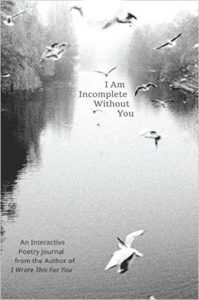
Are you prepared to take the pathway to poetry? In this interactive poetry journal poet Ian Sinclair Thomas creates a collection of thoughtful prompts to ignite your creativity and explore your deep reflection.
I Am Incomplete Without You helps you along your journey as a series of poetry prompts in the form of questions, suggestions and invitations to imagine different scenarios. It is a creative conversation with yourself, a doorway to your artistic side and a way to explore your feelings about life, death, love, loss, regret, hope, the past and the future.
Each prompt is the start of a new journey and where you go is entirely up to you, but wherever you end up, you’ll be happy.
13. Martha Alderson and Jordan Rosenfeld, Writing Deep Scenes: Plotting Your Story Through Action, Emotion, & Theme (2015)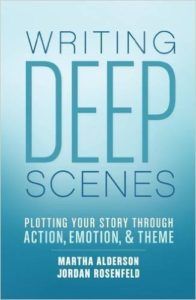
Whether you’re in the preparation stage of your first novel or your first draft is fresh out of the oven, mastering the crucial concepts of plot and scene is key to reaching your story’s full potential. Writing Deep Scenes teaches you how to mix together strong, layered, and engaging scenes in order to create a memorable and page-turning plot.
The pages of this excellent book on writing are filled to brim with practical tools for constructing layers into your scenes, developing the right kind of scene at the right time, and understanding how plot and scene combine.
Authors Martha Alderson and Jordan Rosenfeld explain that scenes are comprised of three key essential layers: action, emotion, and theme. You will learn how to approach each layer and turn them into a scene. Alderson and Rosenfeld uses examples from a variety of genres, which provides the perfect method for plotting effective scenes. Use these techniques and spice up your fiction with page-turning suspense, while exploring new depths in every story you write.
14. Barbara Baig, Spellbinding Sentences: A Writer’s Guide to Achieving Excellence and Captivating Readers (2015)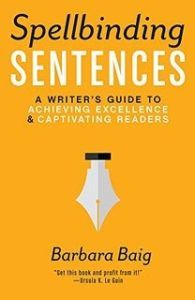
Spellbinding Sentences is the first book to teach writers how to build their skills the same way musicians and athletes build theirs–according to the proven principles of expertise training.
With Spellbinding Sentences as your guide, you will master the essentials of writing craft. You’ll learn how to train, through practice, the part of your mind that comes up with words and arranges them into sentences.
As you practice, you’ll build your vocabulary and become more aware of what words can do, and you’ll expand your repertoire of sentence techniques. The result? You’ll become expert at creating powerful sentences that will grab your readers’ attention and keep them turning pages.
15. Joseph Bates, Writing Your Novel from Start to Finish: A Guidebook for the Journey (2015)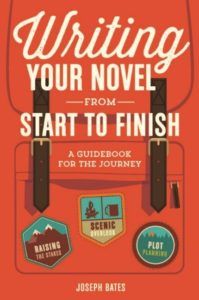
As writers, sometimes we tend to get lost during our journey, especially as we continue to walk in circles, wondering if we’ll ever reach the end. Well, look no further than this helpful road map to success in Writing Your Novel From Start to Finish: A Guidebook for the Journey.
In this book, you will feel confident to approach all of the forks in the road that lead many writers off course. Author Joseph Bates, helps you to navigate through the tediousness of crafting a complex work of fiction and completing the journey with confidence and precision. To help you along the way, each chapter offers ways of boosting your creativity and encouraging you to move forward without ever having to look back.
Bates offers:
- Techniques to help simplify the necessary elements of the novel–from character-building to plotting and pacing.
- Mile Markers to anticipate and overcome roadblocks like ineffective dialogue and struggles with your protagonist.
- Guidelines for Going Deeper to explore and implement uncharted aspects of storytelling, such as finding your voice and the role of theme.
- Try-It-Out Exercises and 27 interactive worksheets that help craft your writing.
No matter what stage you are at as a writer, Writing Your Novel from Start to Finish provides the instruction, inspiration, and guidance you need to complete your journey successfully. So, get writing!
16. Larry Brooks, Story Fix: Transform Your Novel from Broken to Brilliant (2015)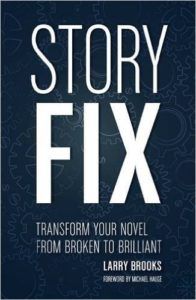
Are you at that point in your writing career where you’ve completed your first draft, taken a deep breath, and shared it with an audience, whether it’s to the world or close at home? Yet you end up disappointed because you were aiming for a better reaction than a shrug of the shoulders “sounds good” or even a rejection?
If so, it’s not the time to give up, but rather wipe the sweat off your forehead and pick up your writing tools and start fixing.
Story Fix is the answer to your revision needs. With useful techniques from renowned author and story coach Larry Brooks, this book on writing will teach you how to:
- Develop a story-fixing mind-set
- Navigate the two essential realms of revision: story and execution
- Evaluate your novel or screenplay against twelve crucial storytelling elements and essences.
- Strengthen your concept and premise.
- Punch up the dramatic tension, pacing, thematic weight, characterization, and more.
- Align your story with proven structural principles.
Have no fear and start fixing!
17. Jeff Gerke, The Irresistible Novel: How to Craft an Extraordinary Story That Engages Readers from Start to Finish (2015)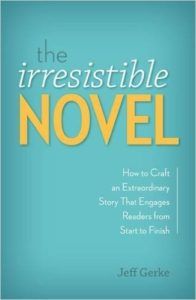
You have a voice to be heard, but before we can find it we can get more frustrated than confident in our writing. It’s always like appearing at a fork in the road and deciding whether to turn right and left, always fearing the wrong turn. However, thank goodness for a compass in The Irresistible Novel.
In this great book on writing, author Jeff Gerke frees you from the rules of writing and provides you with one goal (yes, one): You must engage your readers from beginning to end. Simple, right? Chock full of down-to-earth discussions on the various debates of writing, as well as innovative research on neuroscience and reader response, this book shows you how to:
- Navigate the various debates on writing fiction–showing versus telling, purple prose, outlining, writing description, and more–to decide what kind of novelist you want to be.
- Hack your reader’s brain to hook her interest and trigger emotional engagement from the very first page.
- Incorporate enduring elements of storytelling from masters like Joseph Campbell, Aristotle, and Carl Jung.
When you defy the rules of writing and instead focus on achieving what your readers really want out of a book, you’re free to write a story that is truly irresistible.
18. Libbie Hawker, Take Off Your Pants!: Outline Your Books for Faster, Better Writing (2015)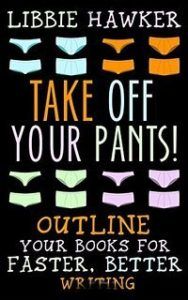
Whether you are a writer that plans or one that just rolls with it, “Take Off Your Pants” offers a useful method that urges writers to outline before they begin the writing process.
In this instructional book, author Libbie Hawker explains the benefits and technique of planning a story before you begin to write. She’ll show you how to develop a character arc and plot, how to pace your book, and how to ensure that your stories are completely satisfying to the reader.
Hawker’s outlining technique works no matter what genre you write. If you want to improve your pace and ensure a quality book before you even write the first word, this book about writing is for you.
Let’s take off our pants and start outlining!
19. John Hough Jr., The Fiction Writer’s Guide to Dialogue (2015)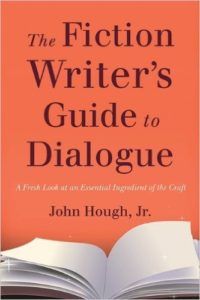
Did you know that a novel can fail or succeed based on the strength of its dialogue? It’s true. As writers, we often overlook that necessary ingredient, but superb dialogue can make a superb novel. Why?
Because dialogue produces action in the story. It feeds what your readers crave. It contains most of the drama of any novel and helps the reader to identity conflict.
In his excellent fiction road map, The Fiction Writer’s Guide to Dialogue, John Hough Jr. reveals how dialogue impacts the overall novel by unveiling a character’s nature as well as defining his or her impulses and emotions. He teaches his readers how to create tension and shows the reader how to achieve it. Hough illustrates his advice with examples from his own work and from that of the best modern writers of dialogue, including Cormac McCarthy, Kent Haruf, and Lee Smith.
Let’s get your characters talkin’!
20. Stant Litore, Write Characters Your Readers Won’t Forget: A Toolkit for Emerging Writers (2015)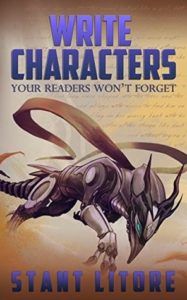
Write Characters Your Readers Won’t Forget is a toolkit for those needing to make your characters more believable.
This book on writing is packed with 30 exercises, helpful examples, and practice strategies that will show you how to write unforgettable characters. It will also teach you how to create compelling dialogue and chart a breathtaking journey for your characters.
Author Stant Litore is best known for his weird fiction, alternate history, and Sci-Fi, so this guy definitely knows what he’s talking about.
21. Jodie Renner, Captivate Your Readers: An Editor’s Guide to Writing Compelling Fiction (2015)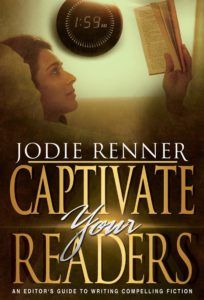
Are you looking to captive your readers?
This award-winning editor’s guide provides instruction on how to write compelling fiction and connect characters with the readers.
You will know the importance of point of view and when to let your characters in while you, the author, stay out. You’ll use effective techniques for giving your characters breath and feeling a vital connection with them, while ensuring that the reader does too.
22. Gwen Hayes, Romancing the Beat: Story Structure for Romance Novels (How to Write Kissing Books Series) (Volume 1) (2016)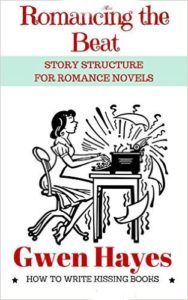
Are you interested in writing a romance? How would you like to write a well-structured kissing book? You can today.
Told in conversational prose, Romancing the Beat reads like you are sitting down to coffee with romance editor and author Gwen Hayes while she explains story structure. You will feel like one of her clients, some of whom are regular inhabitants of the New York Times and USA Today bestseller lists.
Romancing the Beat is a recipe that doesn’t care if you plot or outline before you write, or if you glide your way through the drafts. “Pantsers” and “plotters” are both welcome. So sit down, grab a cup of java (or hot chocolate, if you’re like me), and get started with kissing books.
23. Paula Wynne, Pimp My Fiction: Write a Bestselling Novel by Learning Powerful Writing Techniques (2015)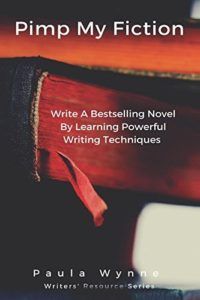
Get pumped with this unique and compelling book on writing that provides aspiring novelists with all the writing tools needed to begin writing a masterpiece.
With Pimp My Fiction you will:
• Learn different story structures and decide which one best fits your novel.
• Hook readers with your opening line.
• Create believable characters that readers will learn to love and trust.
• Decide which character viewpoint is most suitable for your story.
• Follow the emotional journey of your characters that will entice your readers.
• Writing Dialogue: Why each character should have their own voice and how dialogue reveals their personality
And more . . .
So, save yourself time trying to find the right books to improve your writing. This book will provide you with the answers you need to succeed.
Happy Writing!
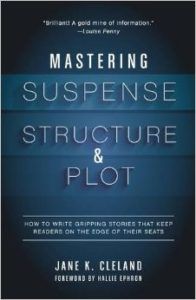

One thought on “23 Best Books on Writing Published in 2015 and 2016”
How informative! You have compiled a fantastic resource, here, which will no doubt save a plethora of aspiring writers hours of dogged research…well done! It truly compels me to write much more, but I will save that for another venue :}